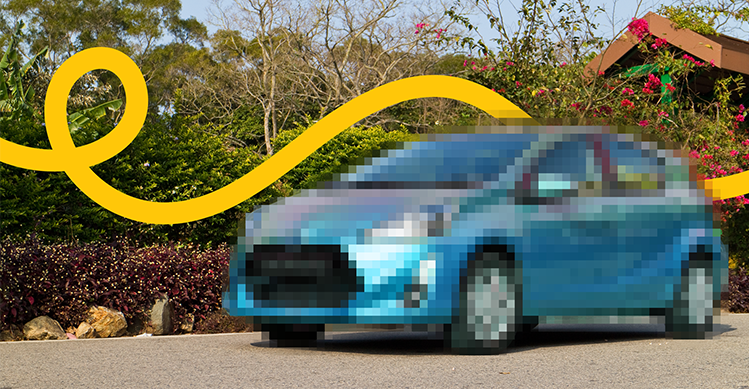Electric Vehicles – let’s get myth busting.
Unless you’re fortunate enough to have owned and driven an EV, they’re the stuff of myths and legends. There can be concerns about electrifying your drive, so we’re going to explore the most common myths about owning an EV. You can also hear experiences and tips on the NZ EV Owners Facebook Group.
The answer to this question depends on where the EV is being used and charged, which is why there is quite a lot of conflicting information on the topic. In New Zealand, EVs produce 80% less CO2 emissions because the New Zealand electricity grid is approximately 85% renewable energy. Across the entire lifecycle of the Electric Vehicle, this translates to a 60% reduction in CO2 emissions. With New Zealand aiming to improve the percentage of renewable electricity it produces, this figure is likely to improve over time1.
Purchase price
Brand new fully electric vehicles and PHEVs start from around $50,000, where the cheapest new petrol car in the NZ market is around $19,000. However, in terms of quality, that’s like comparing apples and oranges.
A better comparison, with similar specs, could be the MG ZS EV (electric vehicle) selling new for $49,990 versus the MG ZST (petrol) at $34,990. A price difference of $15,000.
At this stage, it’s worth accounting for the clean car rebate which may bring the price difference down. For more information on how it works and what you may be eligible for check out the NZTA website.
Running costs
Purchase price is just one part of the equation though. EV drivers will recoup that upfront cost over time, as the cost of charging with electricity is significantly less than refuelling with petrol. Someone travelling the NZ average of 12,500km every year would spend about $2500. If they were driving an electric car, they’d pay only about $500. Many EV drivers find that they have more than recouped their up-front cost within a few years.
An additional saving is in servicing costs, with EVs having far fewer parts that can break and need replacing. So EVs don’t need to be serviced as regularly, and don’t generally cost as much when they are serviced.
Road user charges & increasing petrol prices
Waka Kotahi (the New Zealand Transport Agency) has made all Electric Vehicles or Plug-in Hybrids exempt from road user charges until 2024, saving owners on average $600 a year. Plus, anyone driving a petrol or diesel car currently will be noticing the effect of increasing price of fossil fuels on their wallet. The benefit of going EV is driving straight past the petrol price signs.
Second-hand EVs can be a more affordable option for buyers. While you might be missing out on the most up-to-date technology, you can still benefit from a car with lower running costs and emissions. There are just different cues used to understand the condition of the car you’re purchasing.
A big consideration with second-hand EVs is the battery capacity, and an odometer reading isn’t the best way to judge condition. Like any lithium-ion battery, its capacity to hold charge will decline over time and with EVs this can vary depending on certain things. It’s a good idea to get the battery State of Health (SoH) checked as it will let you know the current battery capacity. For example, if you test a car and it has 85% SoH, that means the battery capacity has reduced by 15% and your range will be approximately 15% less than the new car statistics. Generally, you can lose anywhere between 1-3% in battery capacity each year.
Whether you buy the car or not should depend on if your usual driving habits sit comfortably within the current range.
EVs don’t have a clutch, or as many moving components, can’t be redlined (driven over its maximum revs), and don’t need to be warmed up in the mornings. So, when compared with a second-hand petrol or diesel vehicle, there can be less that could go wrong.
Currently, there are public chargers every 75km on most of New Zealand’s state highways, which is a range most pure EVs can deal with no problem. There are over 1000 public charging stations across New Zealand and this number is growing all the time – especially on high traffic routes.
These public charging stations have fast chargers that can typically add around 100km to your range in 20-30 minutes, costing around $10. EV drivers tend to find that they very quickly learn to plan their journeys around charging, and it’s far from an onerous requirement. Apps like Plugshare help drivers to plan their journey around charging. Although many PHEVs can’t use fast chargers, they can travel long distances using their combustion engine in combination with the electric motor.
You can find a map of all the public charging stations at www.nzta.govt.nz/evroam or charge.net.nz/map2
According to the Energy Efficiency & Conservation Authority (EECA), if all the light vehicles in New Zealand were electric, our energy needs would increase by 20%. With current plans to extend our renewable energy infrastructure, it is estimated by the time electric vehicles surpass petrol or diesel light vehicles, we’ll have enough renewable energy to accommodate them – especially if owners charge their vehicles at off-peak times (overnight)3.
Unlike a petrol or diesel car, when an EV runs out of juice, you can’t just walk to the nearest petrol station to pick up some fuel. This can be highly concerning to prospective EV buyers, however, there is a simple solution. Roadside assistance services specialising in EV rescue can meet you wherever you’ve broken down and recharge your car battery enough to get you to a charging point.
Plus, you’ll never get caught short in the fast lane of the highway. EVs will tell you when you’ve run out of battery, switch to failsafe mode, and give you enough time to pull over.
References


